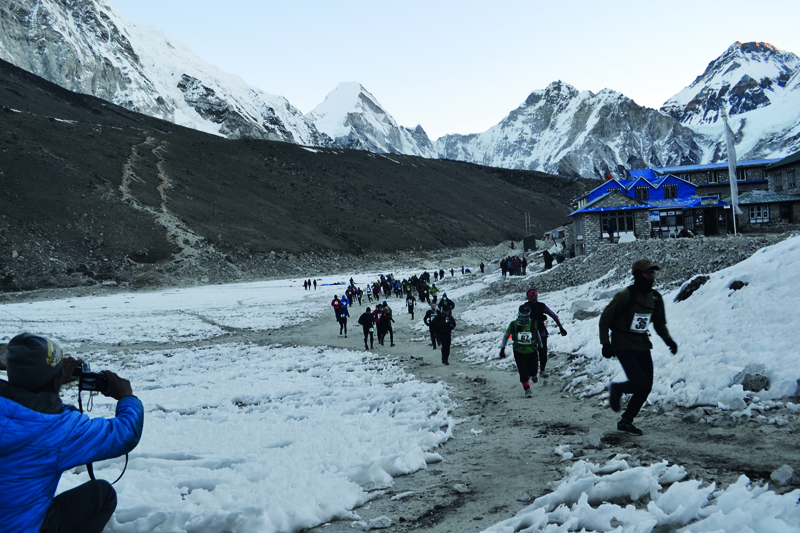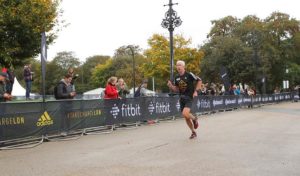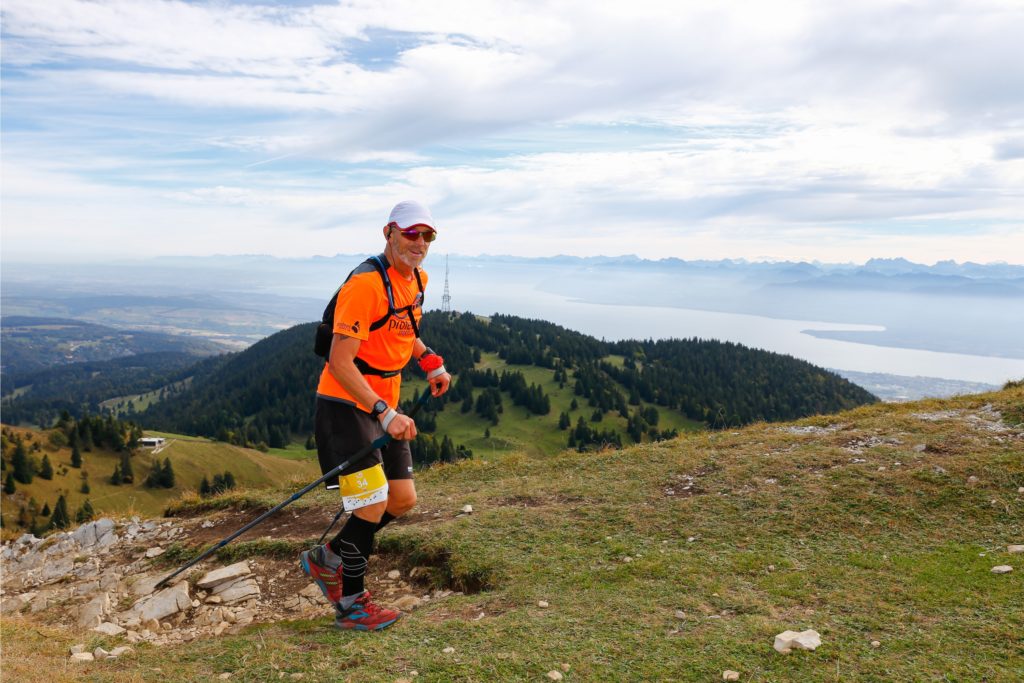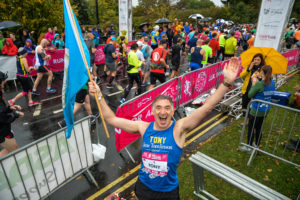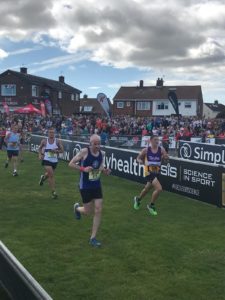“It’s okay Rob, sit here and we will look after you. You need to drink more fluids; how much have you drunk so far? Let’s look at what you’re carrying in your rucksack and see if we can shed weight.”
I start to understand what’s happening now. “What, no I’m fine; honestly I’ll be all right.”
“We’ll be the judge of that Rob, we are looking after you now.”
If the truth be known, I am shattered and just under halfway through the highest marathon in the world. I really don’t know how I’m going to do the next 13 or so miles.
The Everest Marathon has been running since 1987. It has a place in the Guinness Book of Records as the marathon with the highest start line in the world. Many hours previously, I had lined up on the start line with just over 70 hardy individuals. It was 6.30 in the morning, the temperature was around minus 15 and I really did not expect my race to unfold the way it did by the time I’d got to the 12-mile point.
Any traveller to the Everest region has to contend with the effects of high altitude, which commonly occurs at altitudes above 2,500 metres. The average altitude of the Everest Marathon is approximately 4,000 metres from the start line at 5,184 metres. The effects of altitude are compounded by the extreme physical exertion of just getting to the start line itself.
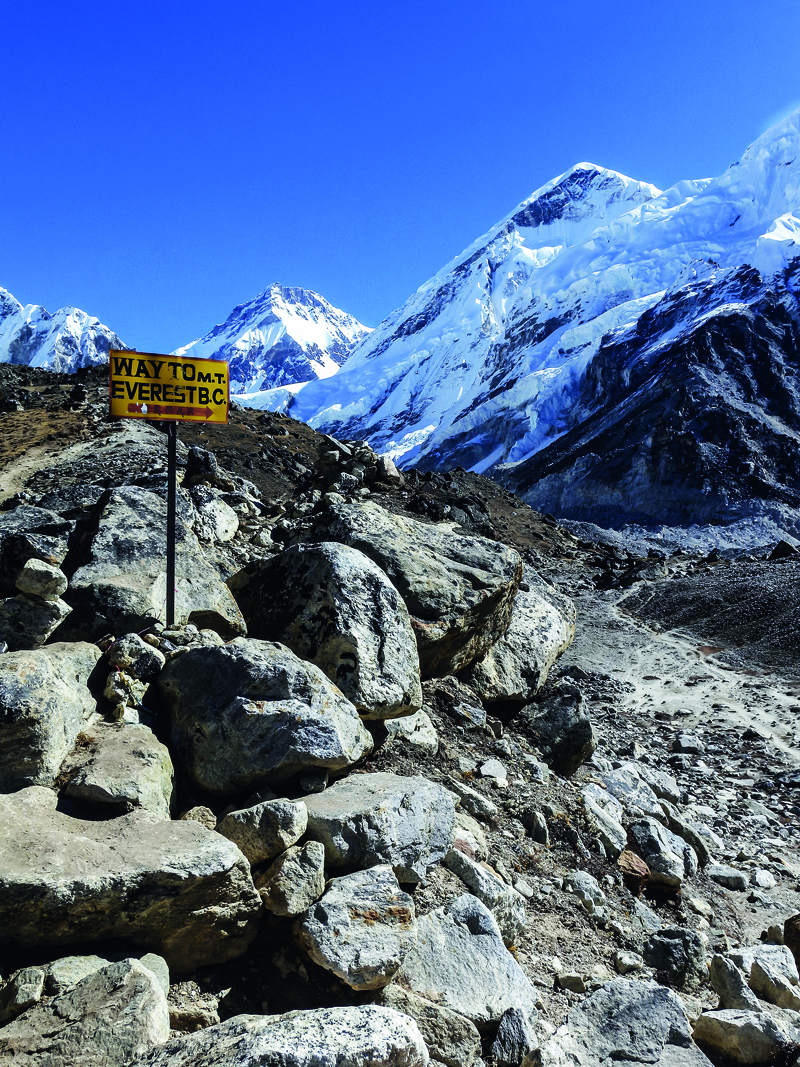 The journey for many starts some two weeks before when the competitors fly into the small and dangerous airstrip at Lukla, the gateway to Everest. It is famed for its ‘controlled crash landings’, where everything is down to the pilot’s skill and judgement. Having survived this, you then start the acclimatisation climb to the start line. Add to this the risks of getting sick due to stomach bugs, as well as coping with the extreme cold, and this makes for a very difficult and demanding race.
The journey for many starts some two weeks before when the competitors fly into the small and dangerous airstrip at Lukla, the gateway to Everest. It is famed for its ‘controlled crash landings’, where everything is down to the pilot’s skill and judgement. Having survived this, you then start the acclimatisation climb to the start line. Add to this the risks of getting sick due to stomach bugs, as well as coping with the extreme cold, and this makes for a very difficult and demanding race.
The runners who are attracted to this race seem to be fell runners. I have only done two fell runs in my life. I recalled the pain of them and the promise I made to myself – that I would never do a Fell run again. So why, oh why, had it not occurred to my addled brain that running in the Everest Marathon might be similar? These were just some of the thoughts that occurred to me during the 14-day trek to the summit.
The major stop-off point on the trek is Namche Bazaar, the Sherpa capital; this is the gateway to the Kumbu Mountain region and is perched on a hillside at 3,400 metres and also the finish to the race. This is the last significant village before Mount Everest. From there, the competitors need to climb 300 to 500 metres daily in order to reach the start line at 5,184 m in a village called Gorak Shep.
ILLNESS
Each day starts with the Sherpas and guides attached to your group delivering what is known as ‘bed tea’ or black tea in our case. After this you go through what will become the daily ritual of packing up your sleeping bag, performing your ablutions and then turning up a few minutes later for breakfast which inevitably will be porridge, toast (without butter) and more black tea.
By 8am you start the trek, generally stopping somewhere for lunch halfway, where the Sherpas have amazingly already set up and are waiting for you. The first week of trekking takes you as high as the Gokyo Valley and for some the chance to bag a peak at over 5,200m. After this, you move back down to the race route and start the trek back up to Gorak Shep.
“I WOKE UP EARLY IN THE MORNING WITH THE AWFUL FEELING I WAS ABOUT TO BE ILL, VERY ILL”All was going well for me until two days before the start of the race when I woke up early in the morning with the awful feeling I was about to be ill, very ill. This is bad when you have western plumbing and good sanitisation, but when you only have a hole in the ground, a torch and a toilet rolls in a plastic bag (just in case you drop it in the hole), then you know it’s really going to be bad. The trek that day took us to 4,900 metres and in normal conditions would have taken three to four hours. It took me closer to nine! I welcomed the following rest day with a chance to rehydrate. After that came the final medical checks and I was allowed to carry on to the start line and final trek to Gorak Shep.
This region is spectacularly beautiful but on this day with the Khumba glacial ice fields on my right and a view of Everest in front, it was probably one of the most memorable days of my life and I hadn’t even started the race yet.
RACE DAY
Breakfast on the morning of the race itself was quieter than normal; most of us were deep in our own thoughts about what lay ahead. We were all tired, we all had our own little issues on the trek to the start, and were at not at our best. Yet we were about to take on one of the world’s toughest marathons.
By 6.30 we were on the start line wearing our duvet jackets and when the starter set us off we all ran, only to slow down a few minutes later gasping for breath as what little air we took in burnt our chests with the chill. We were off.
The first three miles felt very good pace-wise, as it was mainly downhill. As I got to the first checkpoint I looked down and checked my watch, then had to look again: it had taken me a staggering 41 minutes to cover that distance. As I looked at the other runners they were all doing the same – some frantically pressing buttons on their watches to check if what they were reading was right. After some black tea I was off again.
Somewhere between the three-mile mark and just beyond the second checkpoint at seven miles it all started to go horribly wrong for me.
As I went through my mental checklist, physically everything seemed to be okay – my feet were fine, no chafing, I felt hydrated etc. However, I felt absolutely exhausted and at this point the small fingers of doubt started to creep into my mind, that actually I was quite tired and I would probably struggle to get to the halfway point alone.
When you enter this race, as well as getting excellent organisation, you also get some of the best medical care you could hope for. As luck would have it, one of the doctors was actually acting as a running sweeper throughout the route, flitting between the back and middle of the race.
Unsurprisingly, this doctor was also an excellent fell runner, and was able to run by me from 7 to 12 miles, offering encouragement and also making sure I was taking on enough food and water.
As I hit the climb to the 12-mile point at Tengboche monastery, he stayed with me until the last half mile, then ran ahead to warn the medical team of my imminent arrival.
“I SET OFF FOR WHAT I KNEW WOULD BE THE TOUGHEST 14 MILES OF MY LIFE”So there I was at the halfway point, sat on a plastic chair with people giving me water and asking me how I was. Out of nowhere, someone gave me a bowl of rice pudding and I have to say, although not a normal thing to take when on a run, it was really welcome. With my belly full of pudding and my hands swollen from altitude, I set off for what I knew would be the toughest 14 miles of my life.
TORTUROUS
The support team had put me with a female runner from Cumbria, another fell runner. We set off in relatively good spirits as we knew the next few miles were downhill before preparing for the last 700 torturous metres of height gain.
To be honest, I don’t remember much between the 12 and 17-mile point. My new running partner ran on to warn the next day’s station I was coming in and was not in a good way. I recall asking the doctor at the next day’s station if I had a chance in hell of getting to the 20-mile checkpoint, which had a seven-hour cut-off limit. He replied with words that I will never forget: “It’s three miles, it’s almost downhill, and you’ve got one hour and five minutes to do it.” And with that I was off. I made it to the checkpoint with 20 minutes to spare - I didn’t know whether I was pleased with having achieved that. The price I had to pay was dragging my body through a further six miles.
The final miles of the run are known as the Thamo Loop, a three-mile run out and back, so you’re effectively passing runners who are on their final run-in to the finish. All I really recall is the shock of some of those runners seeing me as they realised I had made it a further 14 miles.
By sheer willpower and good fortune, I rounded the final corner and saw the rooftops of Namche Bazaar some 70 metres below. Spurred on by locals and their fellow participants, I reached the finish line, quietly elated. I had survived.
As each competitor crossed the finish line, the race organiser, Diana Penny Sherpani, greeted them and presented them with the rare Everest Marathon race medal. Participants wear this as a proud symbol that they have completed an epic journey of endurance.
Despite the challenges of altitude, climate and a tough trek to the start line, the majority of the competitors successfully completed the Everest marathon. As the godfather of Mount Everest, Sir Edmund Hillary, said, “ It’s not the mountain we conquer, but ourselves”. Never has a quote been more apt when people take on such an epic adventure as the Everest marathon.
Want your say? Email us at editorial@wildbunchmedia.co.uk
Join the Men’s Running community for more comment, analysis and race information direct your inbox. Follow us on twitter @mensrunninguk

